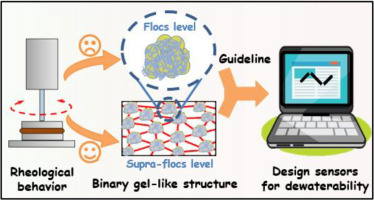Latest news
The research paper “Rethinking the relationships between gel like structure and sludge dewaterability based on a binary gel like structure model: Implications for the online sensing of dewaterability”(DOI: 10.1016/j.watres.2023.120971) finished by Professor Wang Yili and his research group from the College of Environmental Sciences and Technology was published in the top journal in environment Water Research (IF = 12.8). Beijing Forestry University is the signature unit of the first author.

The digital transformation of sludge treatment processes requires online sensing of dewaterability. This topic has been attempted for many years based on macroscopic shear rheology. However, the relationship between rheological behavior and dewaterability remains noncommittal, and the reason is unclear. Herein, a binary gel like structure model was proposed including the interactions network at the supra-flocs level and the gel-like structure at the flocs level. Multiple advanced techniques including optical tweezers were employed to precisely understand the binary gel-like structure and to classify the correlation mechanism between this gel-like structure, rheological behavior, and dewaterability. The analysis of sludge from eight wastewater treatment plants showed the binary gel-like structures at both supra-flocs and flocs levels have significant relationships with sludge dewaterability (p < 0.05). Further deconstruction of the sludge viscoelastic behavior illustrated that the gel-like structure at the supra-flocs level dominates the rheological behavior of sludge. Moreover, the direct description of the binary gel-like structure in four typical sludge treatment processes highlighted the importance of the flocs level’s structure in determining the dewaterability. Overall, this study revealed that shear rheology may prefer to stress the interactions network at the supra-flocs level but mask the flocs level’s structure, although the latter is important. This observation may provide a general guideline for the design of robust sensors for dewaterability.
This study proposed a binary gel-like structure concept of sludge and accurately described this binary structure for the first time to guide the design of the sludge dewaterability sensors. The authors appreciate the financial support from National Natural Science Foundation of China (Nos. 52170122 and 51978054), China Postdoctoral Science Foundation (No. 2022M720454) and Beijing Municipal Education Commission through the Innovative Transdisciplinary Program “Ecological Restoration Engineering” (No. GJJXK210102).












